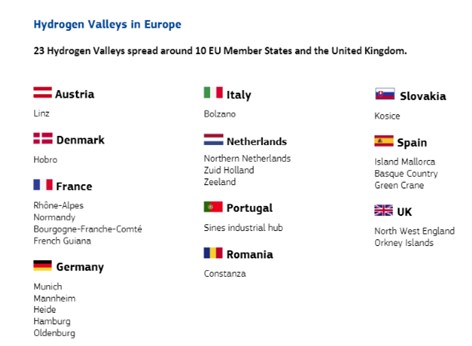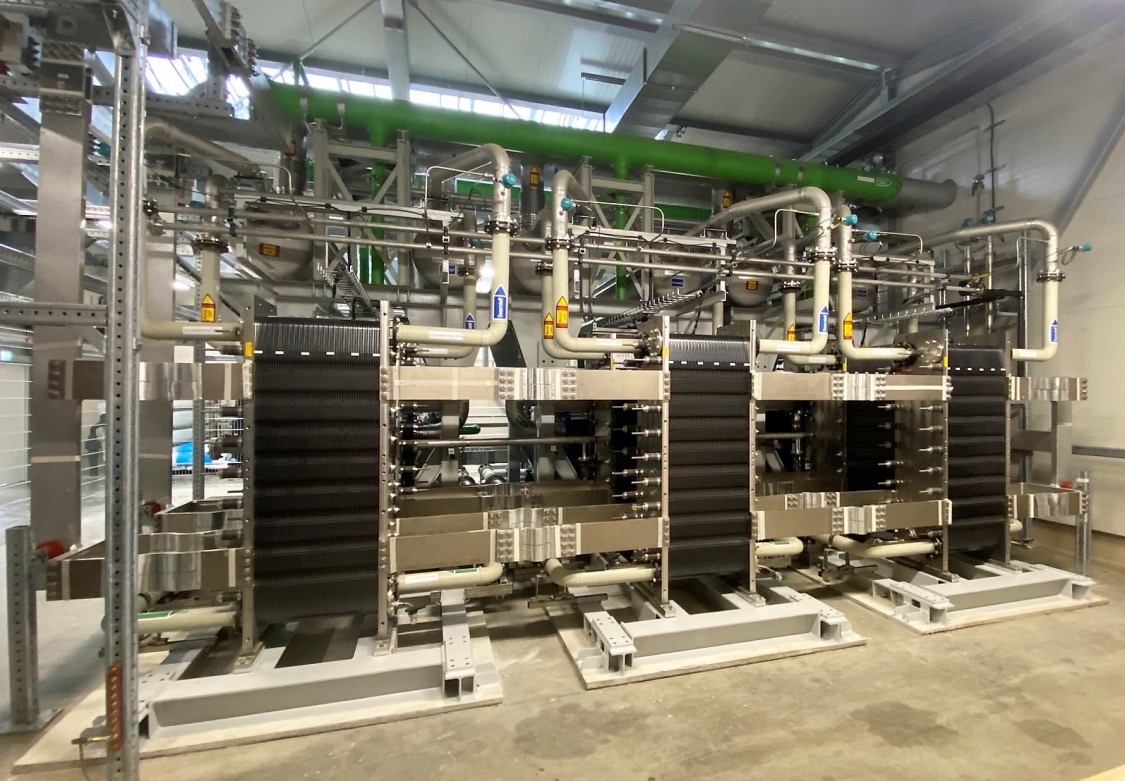What is a hydrogen valley? What is the hydrogen economy? Are there any hydrogen valleys nowadays? These are just some of the questions that may arise and which we will clarify in this article.
Definition
A hydrogen valley is defined as a geographical area where this molecule serves several industrial or private consumers and may be used in applications such as mobility, industry and energy.
A valley can only be considered as such if it covers all the stages of the value chain, from production, distribution or storage to multiple end uses. The geographical space mentioned above may refer to an island, regions, municipalities or even ports and industrial parks. It is important to emphasise that the larger the sphere of influence of the valley, the better it will be perceived by agencies.
The valley concept is inherently associated with a hydrogen economy, which involves the competitive production of hydrogen in order to use it as a low-carbon form of energy or a substitute for fossil fuels and that it is involved in a variety of sectors, not only in the energy sector. In other words, we could describe it as the idea of using hydrogen as an energy source in a local environment, replacing fossil sources such as petrol or natural gas.
The long-term objective set by the European Union is to encourage the development of numerous valleys in a first stage, and then to connect them in order to deploy this energy vector and maximise the uptake by all potential end-users
Hydrogen valleys
There are very few hydrogen valleys in operation today, being the result of micro-scale research projects, and even those that are not hydrogen valleys are called hydrogen valleys.
However, the number of planned integrated projects is enormous, as shown in the infographic below:

These holistic projects are being able to mobilise a large number of participants per initiative and are the perfect example of the role that hydrogen could play in our economy. In Europe, they are being supported through the Clean Hydrogen Partnership through grants for small and large valleys, where not only production, but also distribution and consumption are financed with very interesting subsidy percentages. In the following link you can see the main hydrogen valleys in Europe.
These valleys should be developed in areas where there is access to the necessary resources for renewable hydrogen production (renewable energy sources, water, etc.) and close to consumers so that demand is guaranteed.
Why is Europe so strongly committed to these initiatives?
Well, there are many reasons why continental institutions are favouring hydrogen valleys, although we could highlight the following:
- Hydrogen valleys will favour territorial cohesion, fostering not only cooperation and interdependence on a small scale, but also in cross-border regions.
- These initiatives allow small-scale renewable hydrogen production capacity to be deployed even in the absence of infrastructure for large-scale projects which require transport and storage.
- They contribute to achieving the objectives set out in RED III and RePowerEU with regard to hydrogen production and penetration in key sectors.
- They will enable society to become familiar with this energy carrier and facilitate social acceptance.
Hydrogen valleys in Spain
Let’s sharpen up a bit, let’s talk about Spain!
Spain is one of the countries with the greatest likelihood of becoming a benchmark for the hydrogen economy in Europe due to its enormous renewable potential. Moreover, the absence of a hydrogen transport infrastructure, which will not be developed until 2030 (H2MED), leaves us with little choice but to encourage this type of project on a smaller scale.
According to the Spanish Hydrogen Association (AeH2) and its first hydrogen project census, there are 123 registered initiatives, 34% of which represent hydrogen valleys and integrated projects, indicating the importance of economies of scale towards obtaining hydrogen at a reasonable cost (Spanish Hydrogen Association, 2023). Of those that exist in Spain, the following can be highlighted: Green Hysland, Catalonia Hydrogen Valley, Basque Hydrogen Corridor, Andalusian Green Hydrogen Valley, H2ValleyCat, or BeNortH2 among others.
Although it is true that these projects are mainly led by large companies, it should be noted that they also involve local industries, transporters or institutions, favouring the permeation of hydrogen throughout the industrial fabric. Hydrogen valley objective achieved.
But there is more. Spain is a territory full of areas that could be extremely interesting for the development of hydrogen valleys, such as our island systems, or mountain regions. Nor should we neglect the large cities with their surrounding industries and the intense transport that affects them. At the same time, cross-border regions are also extremely attractive for the establishment of hydrogen valleys. In short, the development opportunities are huge.
So… Are you up for promoting a hydrogen valley?
A new call has been published by the IDAE for the development of Hydrogen Valleys in Spain, focused on large projects. This new line of aid will be open until the end of October 2024.
AtlantHy can help you not only to conceptualise the project and determine its viability, but also to present the grants to the IDAE. We take care of everything and we are experts in these calls, having a success rate of 83% in the projects presented by our team so far.
If you want to create a solid and well-planned project, don’t hesitate to contact us!
